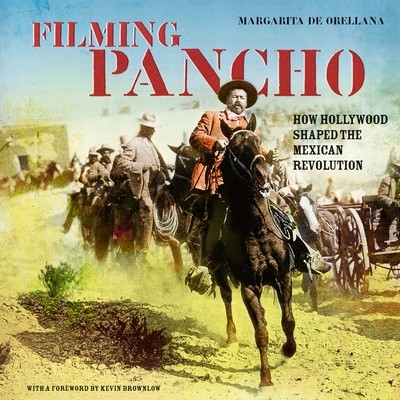
- We will send in 10–14 business days.
- Author: Margarita de Orellana
- Publisher: Verso
- ISBN-10: 1859843484
- ISBN-13: 9781859843482
- Format: 19.3 x 18.9 x 1.6 cm, softcover
- Language: English
- SAVE -10% with code: EXTRA
Reviews
Description
On January 3, 1914, Pancho Villa became Hollywood's first Mexican superstar. In signing an exclusive movie contract, Villa agreed to keep other film companies from his battlefield, to fight in daylight wherever possible, and to reconstruct battles if the footage needed reshooting.
Through memoir and newspaper reports, Margarita De Orellana looks at the documentary film-makers who went down to cover events in Mexico. Feature film-makers in Hollywood portrayed the border as the dividing line between order and chaos, in the process developing a series of lasting Mexican stereotypes--the greaser, the bandit, the beautiful señorita, the exotic Aztec. Filming Pancho reveals how Mexico was constructed in the American imagination and how movies reinforced and justified both American expansionism and racial and social prejudice.EXTRA 10 % discount with code: EXTRA
The promotion ends in 20d.15:50:36
The discount code is valid when purchasing from 10 €. Discounts do not stack.
- Author: Margarita de Orellana
- Publisher: Verso
- ISBN-10: 1859843484
- ISBN-13: 9781859843482
- Format: 19.3 x 18.9 x 1.6 cm, softcover
- Language: English English
On January 3, 1914, Pancho Villa became Hollywood's first Mexican superstar. In signing an exclusive movie contract, Villa agreed to keep other film companies from his battlefield, to fight in daylight wherever possible, and to reconstruct battles if the footage needed reshooting.
Through memoir and newspaper reports, Margarita De Orellana looks at the documentary film-makers who went down to cover events in Mexico. Feature film-makers in Hollywood portrayed the border as the dividing line between order and chaos, in the process developing a series of lasting Mexican stereotypes--the greaser, the bandit, the beautiful señorita, the exotic Aztec. Filming Pancho reveals how Mexico was constructed in the American imagination and how movies reinforced and justified both American expansionism and racial and social prejudice.

Reviews